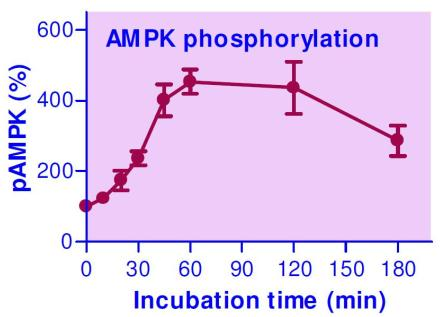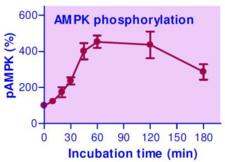Login
Registration enables users to use special features of this website, such as past
order histories, retained contact details for faster checkout, review submissions, and special promotions.
order histories, retained contact details for faster checkout, review submissions, and special promotions.
Forgot password?
Registration enables users to use special features of this website, such as past
order histories, retained contact details for faster checkout, review submissions, and special promotions.
order histories, retained contact details for faster checkout, review submissions, and special promotions.
Quick Order
Products
Antibodies
ELISA and Assay Kits
Research Areas
Infectious Disease
Resources
Purchasing
Reference Material
Contact Us
Locations
Orders Processing,
Shipping & Receiving,
Warehouse
2 Shaker Rd Suites
B001/B101
Shirley, MA 01464
Production Lab
Floor 6, Suite 620
20700 44th Avenue W
Lynnwood, WA 98036
Telephone Numbers
Tel: +1 (206) 374-1102
Fax: +1 (206) 577-4565
Contact Us
Additional Contact Details
Login
Registration enables users to use special features of this website, such as past
order histories, retained contact details for faster checkout, review submissions, and special promotions.
order histories, retained contact details for faster checkout, review submissions, and special promotions.
Forgot password?
Registration enables users to use special features of this website, such as past
order histories, retained contact details for faster checkout, review submissions, and special promotions.
order histories, retained contact details for faster checkout, review submissions, and special promotions.
Quick Order
| Catalog Number | Size | Price |
|---|---|---|
| LS-K268-100 | 100 Tests | $680 |

AMPK Phosphorylation Assay Kit (Fluorometric) - LS-K268
AMPK Phosphorylation Assay Kit (Fluorometric) - LS-K268
Available for shipment within the USA only
Description:
The 5-AMP-activated protein kinase (AMPK) is a key sensor of intracellular energy balance. AMPK is activated in response to an increase in the AMP/ATP ratio which can be caused by a number of factors such as muscle contraction, starvation, or hypoxia. AMPK is a heterotrimeric protein complex comprising of Alpha-(63 kDa), Beta-(38 kDa) and Gamma-(38 kDa) subunits. For each subunit, isoforms have been identified (alpha-1, alpha-2, beta-1, beta-2, gamma-1, gamma-2, gamma-3) which theoretically allow the formation of 12 different proteins. The Alpha-subunit contains a serine/threonine kinase domain and the regulatory subunits contain binding sites for AMP and ATP and for glycogen. AMPK is activated by phosphorylation on Thr-172 within the catalytic domain. AMP binding results in a 2 to 5-fold increase in AMPK activity compared to the basal level. Binding of AMP to the Alpha-subunit causes allosteric activation of the kinase and induces a conformational change in the kinase domain that protects AMPK from dephosphorylation of Thr-172. This cell-based ELISA measures phosphorylated AMPK in whole cells and normalizes the signal to the total protein content. The antibody recognizes both Alpha-subunits and, thus, can be used for cells from all tissues (human, mouse, rat). This simple and efficient assay eliminates the need for cell lysate preparation and can be used to study AMPK regulation in short-term and long-term assays. In this assay, cells grown in 96-well plates are fixed and permeabilized in the wells. AMPK phosphorylation (pAMPK) is measured using a fluorescent ELISA followed by total protein measurement in each well.
Available for USA Shipment Only
Toll Free North America
 206-374-1102
206-374-1102
For Research Use Only
Overview
Description:
The 5-AMP-activated protein kinase (AMPK) is a key sensor of intracellular energy balance. AMPK is activated in response to an increase in the AMP/ATP ratio which can be caused by a number of factors such as muscle contraction, starvation, or hypoxia. AMPK is a heterotrimeric protein complex comprising of Alpha-(63 kDa), Beta-(38 kDa) and Gamma-(38 kDa) subunits. For each subunit, isoforms have been identified (alpha-1, alpha-2, beta-1, beta-2, gamma-1, gamma-2, gamma-3) which theoretically allow the formation of 12 different proteins. The Alpha-subunit contains a serine/threonine kinase domain and the regulatory subunits contain binding sites for AMP and ATP and for glycogen. AMPK is activated by phosphorylation on Thr-172 within the catalytic domain. AMP binding results in a 2 to 5-fold increase in AMPK activity compared to the basal level. Binding of AMP to the Alpha-subunit causes allosteric activation of the kinase and induces a conformational change in the kinase domain that protects AMPK from dephosphorylation of Thr-172. This cell-based ELISA measures phosphorylated AMPK in whole cells and normalizes the signal to the total protein content. The antibody recognizes both Alpha-subunits and, thus, can be used for cells from all tissues (human, mouse, rat). This simple and efficient assay eliminates the need for cell lysate preparation and can be used to study AMPK regulation in short-term and long-term assays. In this assay, cells grown in 96-well plates are fixed and permeabilized in the wells. AMPK phosphorylation (pAMPK) is measured using a fluorescent ELISA followed by total protein measurement in each well.
Specifications
Name
AMPK Phosphorylation Assay Kit (Fluorometric)
Type
Detection/Quantition
Usage
For quantitative fluorescent immunoenzymatic assay of AMPK phosphorylation status in cultured cells.
Target
AMPK Phosphorylation
SampleType
Cells, Tissues
Detection
Fluorometric (Ex/Em 360/450 nm, Ex/Em 530/585 nm)
Supplied Components
The following components are supplied with this product.
- 10x Wash Buffer
- Blocking Buffer
- Protein Stain
- pAMPK-Ab1
- HRP-Ab2
- Dye Reagent
- (See Datasheet for specific volumes supplied)
Applications
Spectrophotometry (fluorometric)
Equipment
Microplate fluorometer
Conditions
Shipped -20°C Dry Ice, Store at -20°C, 6 months shelf life.
Documents
Restrictions
For research use only. Intended for use by laboratory professionals.
Available for shipment within the USA only
Guarantee
This Assay Kit carries the LSBio 100% Guarantee
Publications (0)
Customer Reviews (0)
Images
Fluorimetry

Fluorimetry

Fluorimetry

Fluorimetry

Request SDS/MSDS
To request an SDS/MSDS form for this product, please contact our Technical Support department at:
Technical.Support@LSBio.com
Requested From: United States
Date Requested: 4/25/2024
Date Requested: 4/25/2024









